
As a dentist, you are well aware of the immense responsibility you bear to prevent the spread of infection in your practice.
In this article, we will examine five important aspects of your dental surgery design that can help prevent the spread of infectious diseases.
Optimising these key areas will help you transform your office into a fortress against infection.
With numerous patients passing through your dental surgery daily, the potential for transmitting infectious pathogens is quite high.
Here’s why rigorous infection control is non-negotiable:
Implementing robust infection control measures requires a thorough assessment of your dental surgery layout, equipment, workflows and supplies.
The flooring in your dental surgery serves as the foundation for infection prevention.
Floors are prone to accumulating dust, debris and spatter during dental procedures.
Contaminants that gather on floors can harbour pathogens and get dispersed into the air or tracked around on shoes. This increases infection transmission risk.
To combat this, dental flooring options such as seamless, heat-sealed vinyl floors without grout lines are recommended.
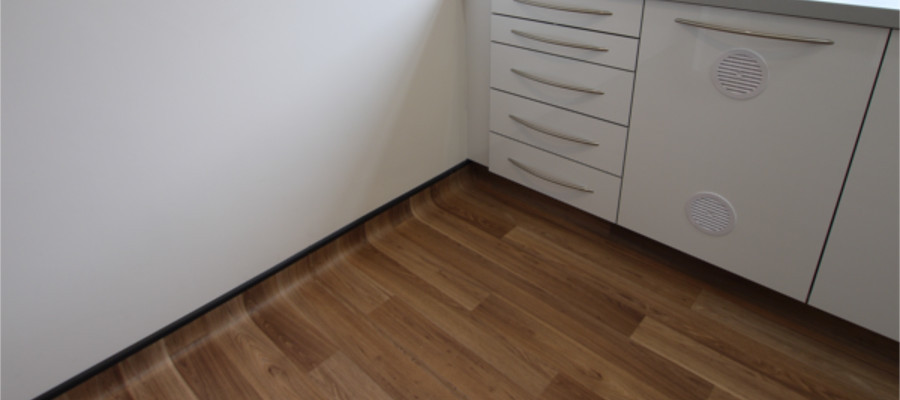
Coved flooring with capped edges that extend partially up the walls creates an impervious, seamless surface that prevents liquids and dust from seeping underneath.
Smooth, continuous surfaces are easier to clean and disinfect compared to tile or wood floors with grout lines and gaps that can trap debris.
Proper cleaning protocols using specialist cleaning agents should be implemented.
Floors must be kept dry to eliminate slip hazards and impede microbial growth.
Choosing durable, easy-to-clean flooring creates a hygienic foundation for your dental surgery that resists contamination build-up. This prevents infectious particles from circulating during dental procedures.
Your flooring sets the stage for effective infection control throughout the dental practice.
When you think of infection control in your dental surgery, the first things that might come to mind are sterilisation methods, personal protective equipment and surface cleaning.
But have you ever considered the air you breathe? Yes, the very air that circulates within your practice plays a pivotal role in infection control.
The recommendation of 10 air changes per hour (ACH) is derived from rigorous studies and guidelines set by health organisations.
This specific rate of air change ensures a systematic dilution of airborne contaminants, thereby reducing the concentration of aerosols and pathogens in the environment.
With dental procedures generating a significant amount of aerosols, it becomes imperative to have a ventilation rate that can effectively mitigate the accumulation of these particles.
A higher ACH ensures that these aerosols are rapidly diluted and removed from the treatment area, reducing the dwell time of potential pathogens and minimising the risk of airborne transmission.
Furthermore, achieving 10 ACH also aids in maintaining a positive pressure environment.
This means that the air pressure inside the dental surgery is slightly higher than outside, preventing the ingress of contaminated air from adjacent areas.
Such a controlled environment is crucial in ensuring that the surgical area remains as sterile as possible, safeguarding both patients and dental professionals.
As a dental practice design company, we can’t stress enough the importance of proper dental ventilation.
It’s not just about bringing in fresh air; it’s about ensuring that the air is clean, free from pathogens, and circulates efficiently throughout the practice.
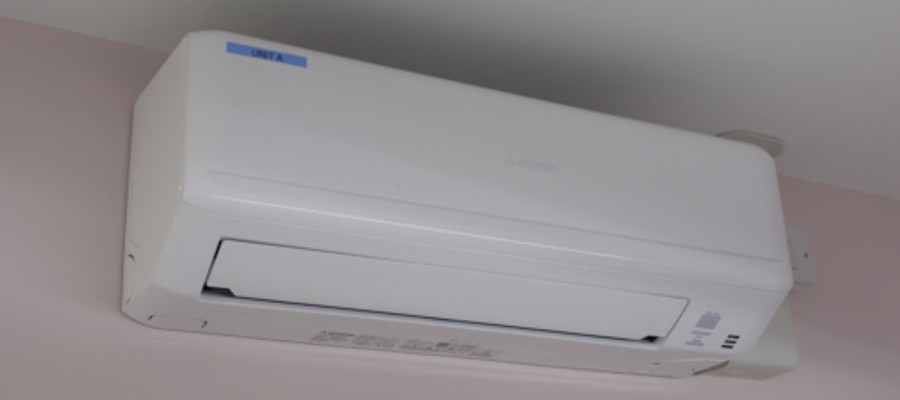
Modern ventilation systems are designed to filter out contaminants, ensuring that the air your staff and patients breathe is of the highest quality.
With procedures like drilling, the generation of aerosols is inevitable. These tiny droplets can harbour pathogens and remain suspended in the air for extended periods.
Efficient ventilation acts as a protective barrier, ensuring these aerosols are diluted and removed from the environment, safeguarding both your team and your patients.
As you invest in state-of-the-art dental equipment and training, don’t overlook the importance of optimising your ventilation system.
It’s an investment in health, safety and peace of mind.
In the bustling environment of a dental surgery, work surfaces are more than just countertops – they’re the operational hub.
From holding dental instruments to being a quick rest for clinicians’ elbows, these surfaces see a lot of action.
Here’s where the magic of continuous work surfaces comes into play:
Benefits of Continuous Work Surfaces:
| Feature | Continuous Surface | Non-Continuous Surface |
|---|---|---|
| Hygiene | Easier to clean due to lack of seams | Potential for debris accumulation in gaps |
| Maintenance | Lower maintenance needs | Regular maintenance required for gaps/seams |
| Durability | High resistance to wear and tear | Potential for wear at seams/gaps |
| Workflow Efficiency | Smooth workflow without interruptions | Potential for disruptions due to gaps |
When considering a renovation or setting up a new dental practice, it’s worth investing in continuous work surfaces.
Not only do they offer practical benefits in terms of hygiene and efficiency, but they also elevate the overall look and feel of the space.
Remember:
While the choice of work surface might seem like a minor detail, it plays a pivotal role in the overall functionality and aesthetics of a dental surgery.
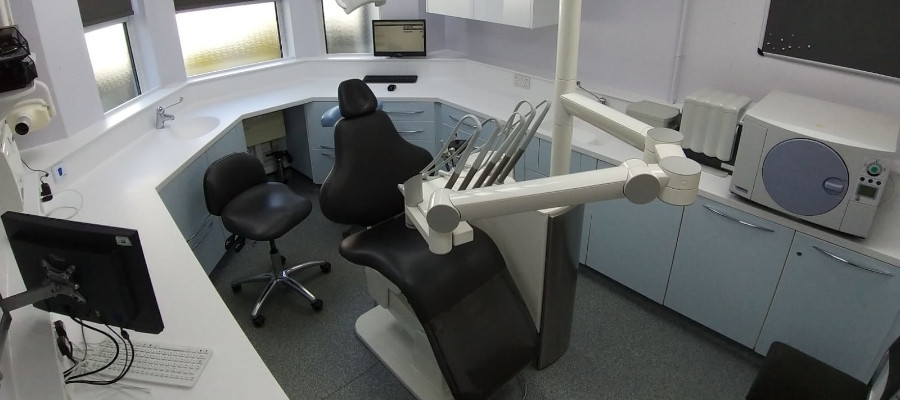
Continuous surfaces, with their myriad benefits, are fast becoming the gold standard in modern dental practices.
Every element in a dental surgery, no matter how seemingly mundane, has a role to play in the grand symphony of patient care.
Cabinetry, often overlooked, is not just about storage or aesthetics; it’s about ensuring seamless operations and upholding the highest standards of hygiene.
From the innovative knee-operated doors to the humble sinks, let’s delve into the world of cabinetry and discover how it shapes the dental experience.
Knee-Operated Cabinetry Doors:
In the fast-paced environment of a dental surgery, every second counts.
Knee-operated doors offer a seamless blend of functionality and hygiene. They ensure that the workflow isn’t interrupted, and the risk of cross-contamination is significantly reduced.
Sinks in a dental surgery are not just for washing hands.
Their frequent use in cleaning instruments and rinsing makes them a hotspot for potential contaminants.
Cleaning sinks at the ideal temperature range of 20-40 degrees ensures effective removal of pathogens without causing wear to the sink material.
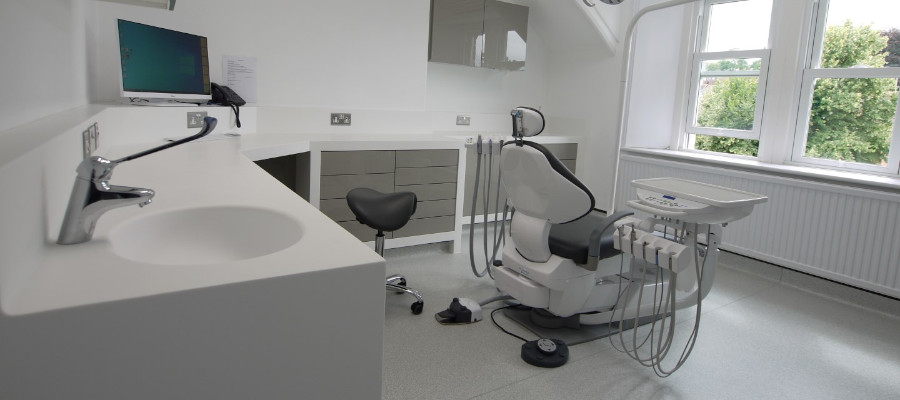
Types of Dental Sinks:
A noteworthy feature of best-practice dental sinks is the absence of overflows.
This design choice aligns with the requirements set out in the HTM 01-05 guidelines, ensuring that there’s no hidden space for water or contaminants to accumulate.
While sinks might seem like a basic fixture, their role in maintaining a sterile environment in dental surgeries is paramount.
Choosing the right type of sink, coupled with proper cleaning protocols, can significantly elevate the standard of infection control in any dental practice.
In the intricate ballet of a dental procedure, every move is choreographed for precision and safety.
And in this dance, the unsung heroes are often the dispensers and storage solutions that ensure everything is at arm’s reach, yet safely stored away.
Dispensers play a pivotal role in ensuring that disposables and PPE are easily accessible, yet stored in a manner that prevents contamination.
Here’s why they’re indispensable:
Types of Dispensers:
While dispensers and storage solutions might seem like mere fixtures, they play a crucial role in ensuring that dental surgeries run smoothly and safely.
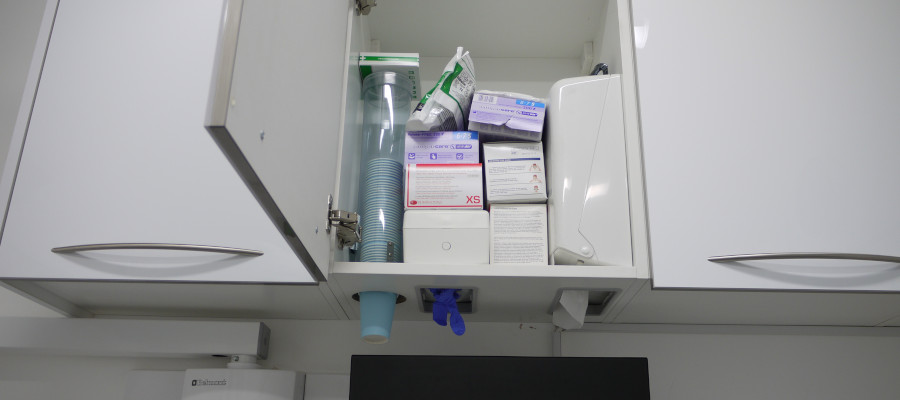
Investing in the right dispensers and storage solutions can significantly elevate the standard of care and efficiency in any dental practice.
In the quest for impeccable infection control, even the walls play a part.
Smooth wall surfaces offer several advantages:
Dust isn’t just an eyesore; it can be a breeding ground for pathogens.
Effective dust management is crucial for:
In the intricate world of dental surgeries, every detail matters, especially when it comes to infection control.
To recap, the five pivotal ways to reduce the spread of infection are:
By focusing on these aspects, dental surgeries can offer a safe, hygienic environment for both patients and staff, reinforcing the commitment to excellence in dental safety.
Contact us at Eclipse Dental for personalised advice or assistance in improving your dental surgery’s infection control standards.
We are dedicated to enabling your practice to meet the highest performance levels while ensuring adherence to CQC guidelines.

I have used them for the first time in recent months for a complicated project in carrying out a practice refurbishment. Eclipse were meticulous and brilliant. Very knowledgable engineers and a beautiful finish to my practice. They really are a family based business who will look after you. Very professional company and will definitely keep using them.

I had my 2 surgery practice completely stripped out and services repositioned with new flooring, new equipment and redecorated. They kept to the agreed time scale and we were up and running in our state-of-the-art new surgery. Thank you Eclipse and I will be using your services again.

I did a lot of research looking for a dental fit-out company before I came across Eclipse Dental. They designed the surgery exactly the way I wanted it to look which suits my requirements perfectly. The final result was phenomenal, just phenomenal!

The engineers that attend our practice are very knowledgeable and always act in a professional manner. If we have an emergency situation John Boyt always tries his best to fit us in. I have no hesitation in recommending Eclipse Dental Engineering to you for all your servicing and breakdown needs.

Eclipse listened to my ideas, they added a lot to them and improved my initial design. They had loads of realistic and creative ideas for a 21st century dental practice! Two surgeries were refurbished on time without any interruption of our clinics.

We would highly recommend the awesome Eclipse team who guided us through the design process, finishing touches and colour schemes. Their ability to combine build works with equipment and dental engineering makes it so much easier and better value.

I am very pleased with the result, it is of a high quality and surpassed my expectations, on the strength of the work done I commissioned some extra wall cabinetry. The whole process was hassle-free and I would be very happy to recommend Eclipse to my friends in the business.
We used Eclipse recently in an emergency as we had equipment failure. They were very quick to respond to our call and were able to get us working again within 2 hours. The engineer was very friendly and professional and I would highly recommend this company.

I would like to express my gratitude to you and your team for your professionalism and prompt response when our dental chair packed up. You attended the same day, removed the damaged chair and installed a rental to allow us to continue practising.

Having dealt with many fit-out companies over the years, Eclipse Dental has been one of the most professional, dependable and sincere companies I have ever worked with. I would not hesitate to use their services again.

Excellent service, Eclipse have worked tirelessly for us and have always come out same day if we have a problem stopping us working. Thanks to all at Eclipse.
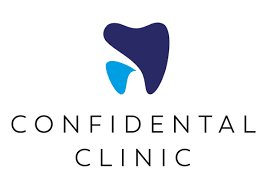
Their awareness of CQC regulations regarding equipment relocation and our necessity to minimise downtime was brilliant. We would like to recommend Eclipse Dental to anyone considering a refurbishment or relocation.
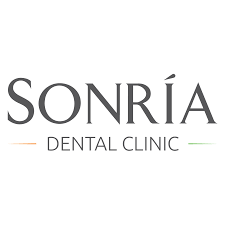
Very happy with the service and reliability of the team. From the beginning to the end, everyone was always helpful and very kind. I definitely will recommend Eclipse Dental!

I liked how swiftly the projects were done. Everything was managed, everything was timed and everything was coordinated. And every day we saw something happening. It was very exciting.

The quality of craftsmanship was exceptional—the cabinetry, flooring and all custom elements were made precisely to our specifications and aligned perfectly with our vision for the space.

Brilliant. Just professional! Complete refit of surgery. Flawless.

The boys did well! We didn’t give them much time to prepare but they did a great job, extremely pleased.

We have had the chairs for some time now and are happy with them. They serve what we need them for. The aftercare service is excellent

Eclipse are very flexible and listen to your needs. We are very impressed with the quality of workmanship they delivered. I would not hesitate to continue recommending Eclipse.
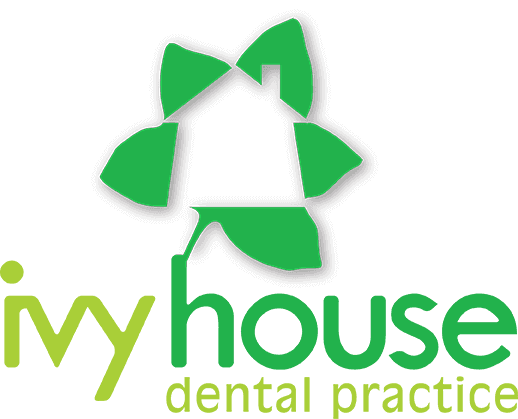
Eclipse were always accommodating of any requests and would always go the extra mile. I look forward to working with them for many years to come.

We are delighted with the end result. The practice looks good and, more importantly, works ergonomically and efficiently.